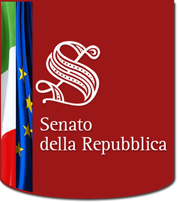Glossary

P
Parliamentary Oversight
Parliamentary Oversight is the function performed by parliaments to control the action of another political body, enforce its statutory or general accountability, adopt any necessary measures to restore infringed public interests.
In modern democracies, governments are subject to parliamentary oversight on a permanent basis. In presidential forms of government, like the United States, not just the Head of Government, but also the heads of executive departments are directly responsible to Parliament. By contrast, in European parliamentary democracies, the Government is personally accountable to parliament also with respect to the actions of the public administration.
Parliamentary oversight is a relational mechanism of a political nature that does not strictly require a system of sanctions; its development is closely linked to the interaction between the Executive and the Legislative branches of government.
Parliamentary oversight unfolds through three fundamental stages: assessment, enforcement of Government accountability, and restoration of infringed public interests. Implementation of these stages involves: identifying which areas of Government action are subject to parliamentary oversight; gathering and analysing evidence to enable Parliament to assess Government's ability to discharge its mandate and ascertain Government's achievements; expressing a judgement on the effectiveness and efficiency of Government action; defining expected follow-up initiatives; urging Government, either directly or indirectly, to acknowledge requested adjustments.
The oversight function is performed by Parliaments through a variety of procedures and tools, such as questions and interpellations, inquiry and select committees, fact-finding investigations and hearings. Nonetheless, it can be argued that, especially in European parliamentary democracies, instances of oversight are to be found in the whole spectrum of parliamentary business.
Different instances of parliamentary oversight can be identified.
See: Ex post Oversight - Ex ante Oversight - Audit - Oversight through Information
Public policy
In general, a public policy is an action or set of linked actions of varying complexity and intensity that is designed to resolve (or attempt to resolve) a public problem. In this respect, a policy can be public even if decided on and implemented by private actors (such as a foundation or a voluntary association), as long as the action is intended to solve a collective problem. The literature identifies a policy life cycle, which develops from the time the problem is identified to the formulation of the intervention (or interventions) intended to resolve it, to the decision to adopt and concretely implement the intervention (see intra). The literature identifies a policy life cycle, which develops from the time the problem is identified to the formulation of the intervention (or interventions) intended to resolve it. It then progresses to the decision to adopt and concretely implement the intervention (see intra). In systems where the evaluation culture is more developed, the public policy may include, from its initial formulation, a "sunset clause" whereby the future financing of the policy (and so its continuing existence) is dependent upon its successfully undergoing an ex post evaluation that is factored in from the outset.
A public policy can be evaluated (see intra) from the point of view both of implementation, i.e. the way in which the original design is actually implemented, and of its effects. In the latter case, the evaluator's task is to try to estimate how much of the change observed in the reality following the introduction of the policy has in effect been caused by the measures contained in it. There is some debate as to whether it is possible to strictly identify the effects of broad-ranging and complex policies formed by linked interventions distributed over time. Whether it is possible to strictly identify the effects of broad-ranging and complex policies formed by linked interventions distributed over time is the subject of some debate. Several commentators are of the opinion that policies should be evaluated at a lower level of aggregation, which would make it possible to identify and track the individual measures and identify the population of beneficiaries.
Source:
- Martini A. and Sisti M., Valutare il successo delle politiche pubbliche, Bologna 2009, p. 22 et seq.





